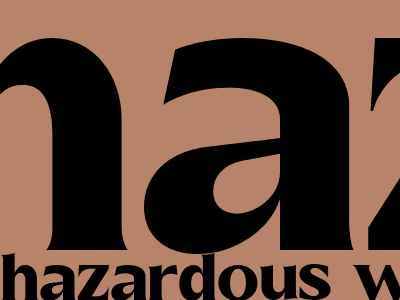
Hazardous Waste Disposal: A Comprehensive Overview
Introduction
The improper disposal of hazardous waste poses significant risks to human health and the environment. Understanding the regulations and best practices associated with hazardous waste disposal is crucial for businesses and individuals alike.
Defining Hazardous Waste
Hazardous waste is any waste that exhibits ignitability, corrosivity, reactivity, or toxicity. These characteristics make hazardous waste dangerous to handle, transport, and dispose of. Examples include industrial solvents, heavy metals, and medical waste.
Regulations and Compliance
Federal Regulations
In the United States, the Environmental Protection Agency (EPA) regulates hazardous waste disposal under the Resource Conservation and Recovery Act (RCRA). RCRA classifies hazardous waste and sets standards for its management, including storage, transportation, and disposal.
State and Local Regulations
Many states and localities have their own hazardous waste regulations that may be more stringent than federal requirements. It is essential to consult with local authorities to ensure compliance with all applicable regulations.
Methods of Hazardous Waste Disposal
Landfilling
Landfilling is a common method of hazardous waste disposal. Hazardous waste is placed in specially designed landfills that meet RCRA standards. Landfills must have liners and leachate collection systems to prevent contamination of soil and groundwater.
Incineration
Incineration involves burning hazardous waste at high temperatures to destroy organic compounds. Incinerators must meet specific emission standards to minimize air pollution.
Recycling and Treatment
Recycling and treatment can reduce the amount of hazardous waste disposed of. Recycling involves recovering valuable materials from hazardous waste, while treatment can neutralize or stabilize hazardous components.
Best Practices for Hazardous Waste Disposal
Waste Minimization
The best way to reduce the risks associated with hazardous waste is to minimize its generation. Implementing waste reduction programs can help businesses reduce the amount of hazardous waste produced.
Proper Storage
Hazardous waste must be stored in compatible containers that are properly labeled and sealed. Storage areas should be secure to prevent unauthorized access and accidental releases.
Safe Transportation
Hazardous waste transportation must comply with DOT regulations. Transporters must be licensed and trained to handle hazardous materials. Vehicles must be properly labeled and equipped with emergency response equipment.
Conclusion
Hazardous waste disposal is a complex and regulated process that requires a comprehensive understanding of the risks involved. By following regulations, implementing best practices, and seeking expert advice, individuals and businesses can ensure that hazardous waste is disposed of safely and responsibly.